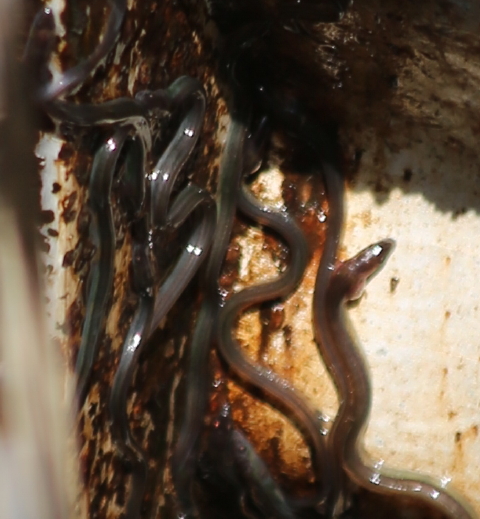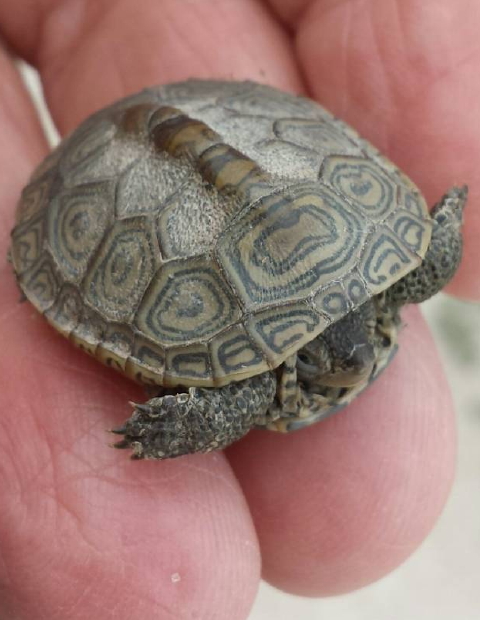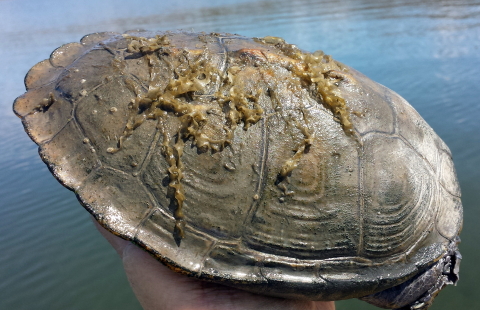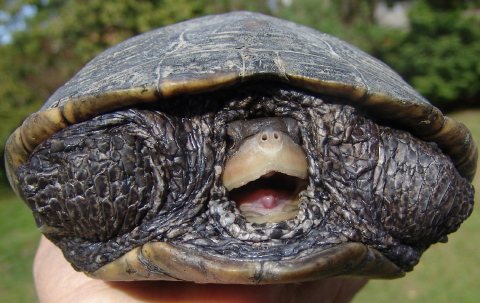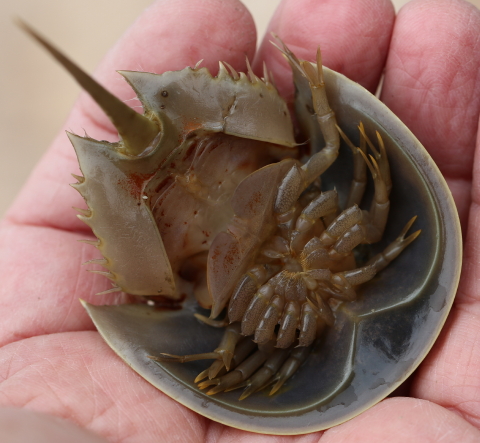Diamondback Terrapin 829 Cover GirlÂ
Every turtle has a story to tell and a lesson to share. Â While researchers eschew bonding with wild animals, the truth is there’s always a special critter or two through the years that you remember fondly. Â Female Terrapin #829 played such an important conservation role as the face of Cape Cod diamondback terrapins that she holds a special place in our hearts and minds. Â In 2000, her glossy photograph graced the cover of Natural New England Issue #2 to represent this species in trouble on Old Cape Cod. Â Her captivating beauty, which appeared in countless publications and multimedia presentations, helped inspire a community conservation effort that turned around the outlook for diamondback terrapins on the Outer Cape … and has helped preserve fragile coastal uplands and restore critical salt marsh systems.
[ASIDE: Â Yes, we know. Â That’s political science, not hard science. Â But it’s Turtle Journal’s thesis that effective conservation is the nexus of sound science and smart political science. Â Each on its own is necessary, but insufficient. Â You must do both with equal skill and intensity.]
Diamondback Terrapin 829 in Blackfish Creek
We chose Terrapin 829 for this role because of this wonderful photograph taken on the stunning brilliant day of her first capture on September 26th, 1999. Â The backdrop is Blackfish Creek, Wellfleet Bay and Great Island in the far background. Â On this perfect fall day, as most Outer Cape terrapins were preparing to enter brumation, healthy Terrapin 829 weighed 1394 grams, her carapace measured 19.6 centimeters and her plastron spanned 17.6 centimeters. Â Based on our Outer Cape growth model, we estimate her age in 1999 as around 30 years.
Proof of Concept: Â Capturing Terrapins from a Kayak (1999)
We captured Terrapin 829 from a kayak with a 10-foot dip net at 7:15 in the morning in her native Blackfish Creek. Â She was one of the first terrapins netted in this proof-of-concept approach that subsequently became the principal methodology for water captures on the Outer Cape and SouthCoast. Â Terrapin 829 was also the next to the last active terrapin we observed in 1999; all others had already burrowed under the ooze for a long winter’s snooze.
Terrapin 829 in 2002 with Traumatic Shell Damage
On June 3rd, 2002, we sampled terrapins in Wellfleet Bay’s prime mating aggregation: Chipman’s Cove. Â We netted ten female terrapins; nine were first time captures. Â Terrapin 829 proved the only recaptured turtle. Since we first saw her in September 1999, she had suffered traumatic shell damage to her front left quadrant, probably caused by an encounter with a boat. Â See Life After Celebrity originally published in Terrapin Diary and now posted on Turtle Journal.
Terrapin 829 15 Years Later (May 2014)
On Friday, May 16th, the Turtle Journal team visited the Chipman’s Cove mating aggregation for the first time in the 2014 season. Â We waded into the flooding cove and hand-netted six diamondback terrapins: Â two recaptures and four first timers. Â The very first turtle we netted was the quite distinctive Terrapin 829, easily recognizable by the injury to her left front marginal scutes.
Terrapin 829 Still a Cover Girl Beauty at 45!
In 15 years Terrapin 829 has grown 25 millimeters in carapace and plastron lengths, while maintaining the same weight. Â She’s still quite a beauty, especially when she shows her right profile and hides the cracked marginals. Â We suspect her recent glossy image will still grace many a publication and more than a few multimedia presentations.
Still Hot — Female Terrapin 829 Pursued by Handsome Male
How hot is she? Â When we observed Terrapin 829 paddling through the shallows of the Chipman’s Cove mating aggregation on Friday, she was hotly pursued by a handsome male terrapin. Â Note the gender dimorphism of diamondback terrapins illustrated by this pairing. Female Terrapin 829 weighs 3 pounds and is 7.8 inches long; the large mature male, #6103, weighs 2/3 pound and is 4.9 inches long.










